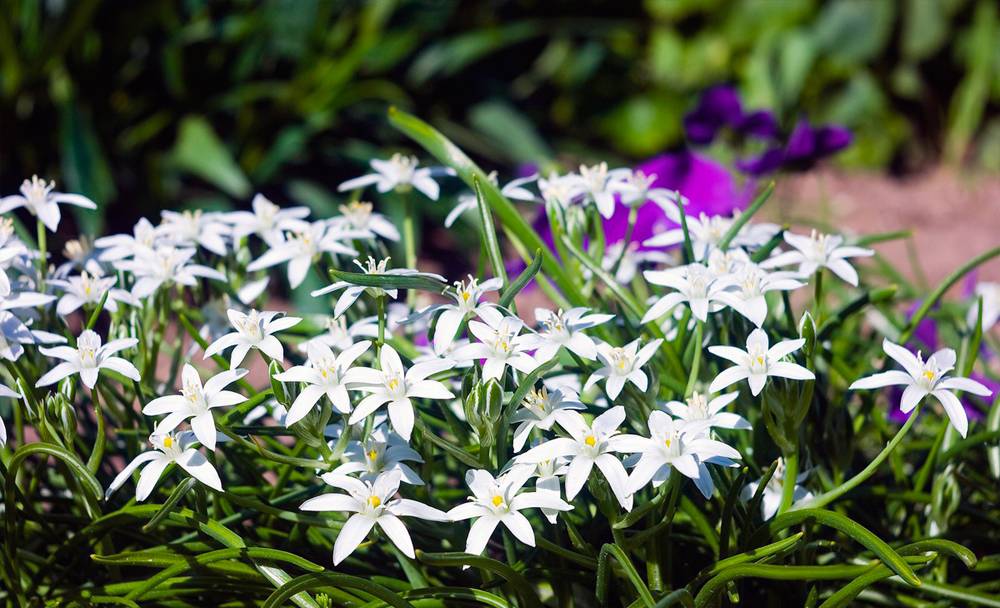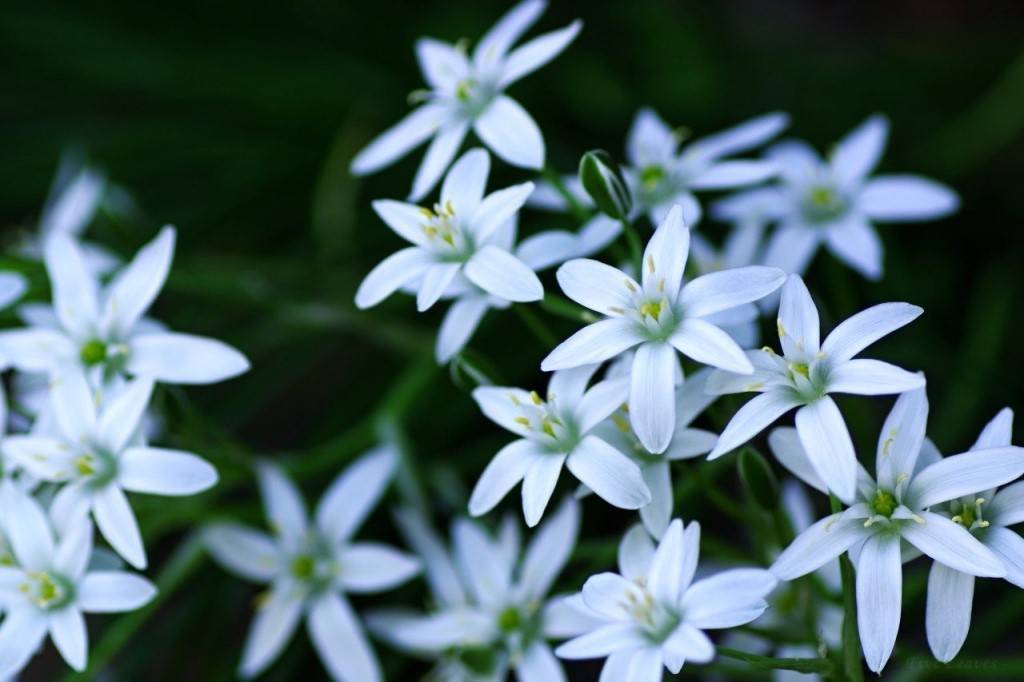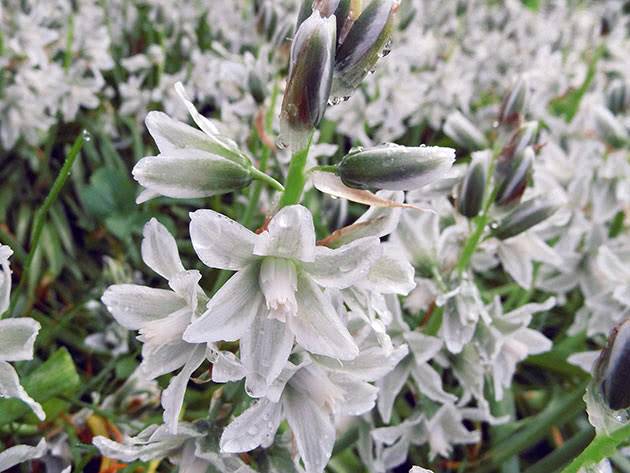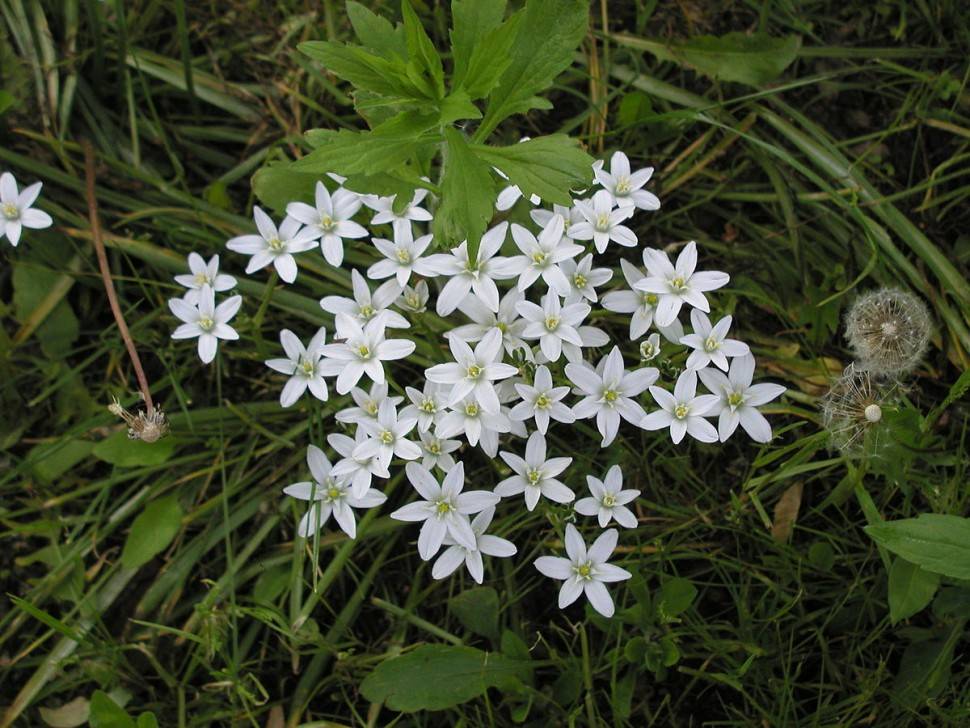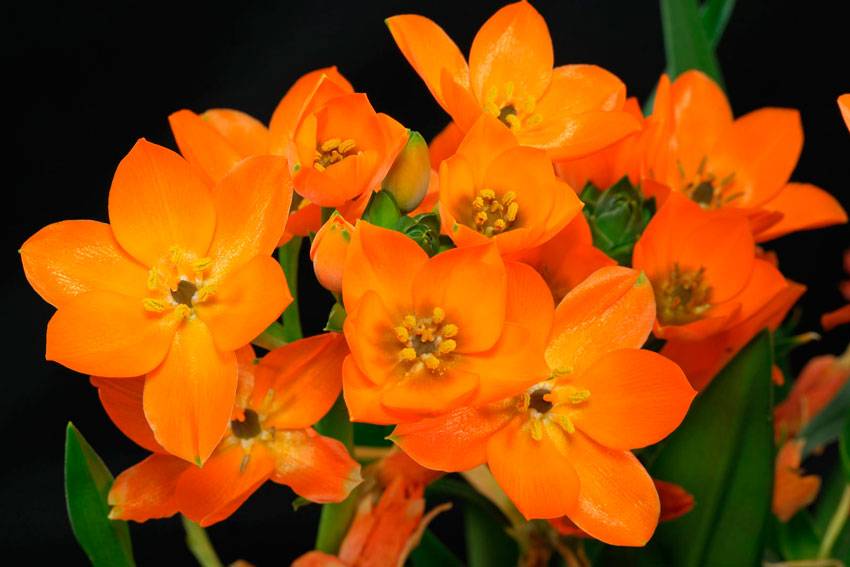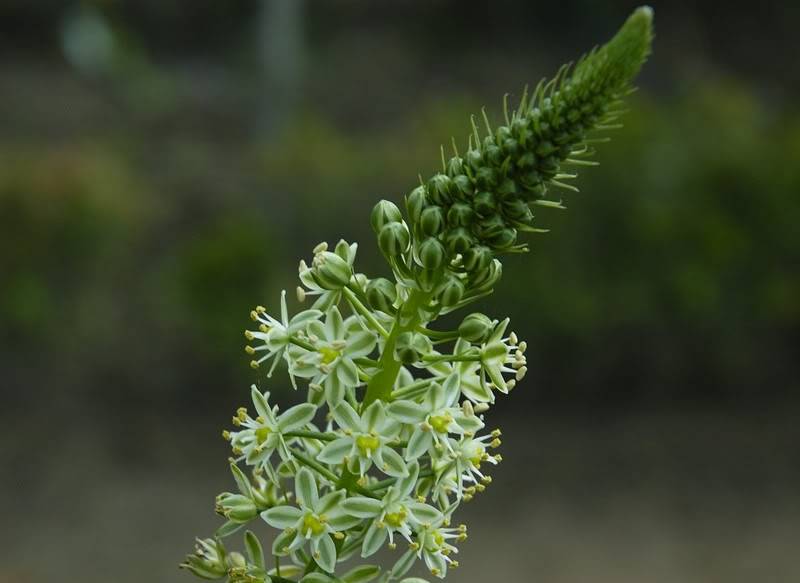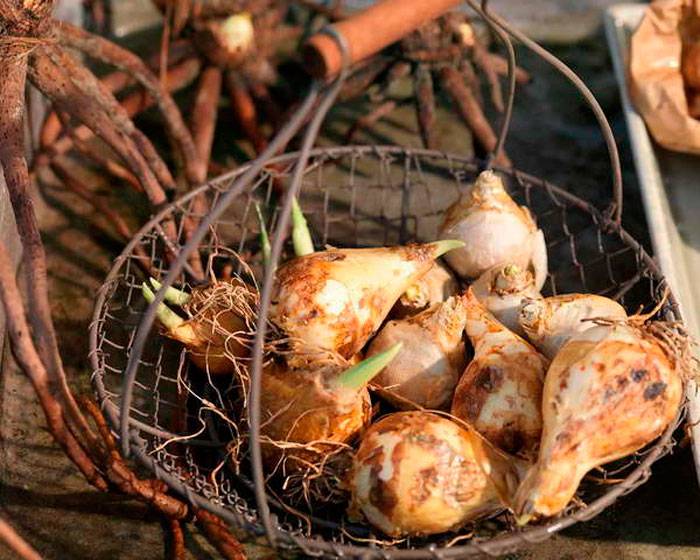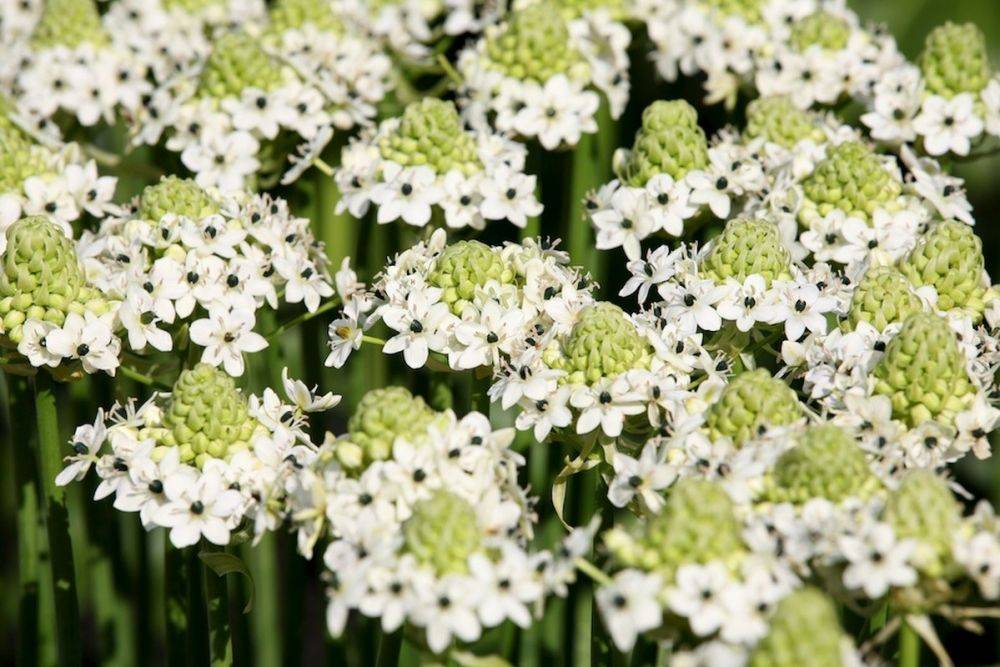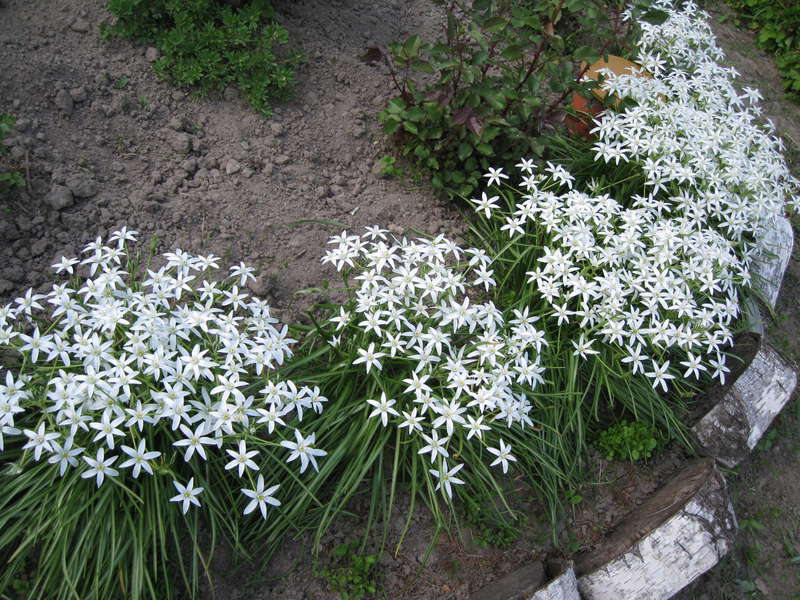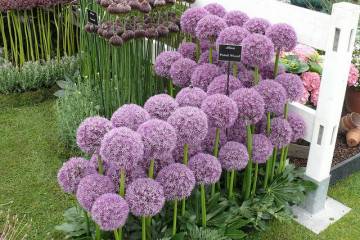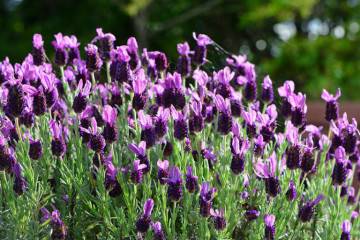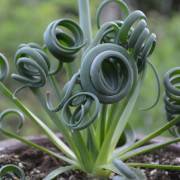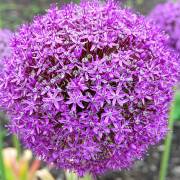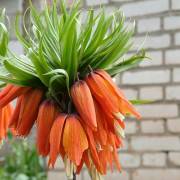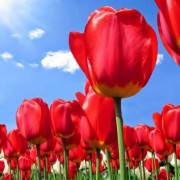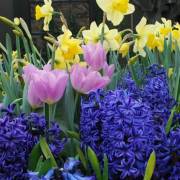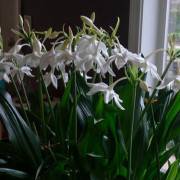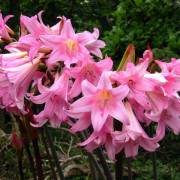Poultry house - planting and care in the open field
Content:
- Birdhouse - what kind of flower, a short description of what it looks like
- Useful properties of the poultry farm
- Types and varieties of poultry
- Planting a poultry farm in open ground
- What time to plant, landing features
- Rules for caring for a poultry farm in the garden
- Soil, lighting and moisture indicator for a flower
- How to plant a poultry house - basic methods
There is such a bulbous plant - a poultry farm. Planting and caring for a crop in the open field is within the power of even a novice gardener. The poultry flower is a perennial. It belongs to the asparagus family (hyacinth subfamily). The name of the culture consists of two words and is translated from Latin as "bird" and "milk". It is sometimes called the "white birdhouse" because the flowers are mostly white. To decorate the garden, the poultry farm is indispensable.
Birdhouse - what kind of flower, a short description of what it looks like
The plant is a bush with a height of 0.3-1.20 meters. A rosette of belt-like leaves grows at the top of the bulb. Their color can vary from gray-greenish to deep green. In most cases, there is a longitudinal light line on the plate.
A long peduncle grows from the rosette, which ends in a racemose (sometimes umbellate) inflorescence. Depending on the variety, the brush is dense or loose and consists of 20 to 100 flowers. The buds are predominantly white, but they are colored in different shades of orange or yellow. Tepals have a green stripe along the edge.
Useful properties of the poultry farm
Only one species has healing properties, which is called the Indian onion. The plant as a whole is beneficial. For medicinal purposes, only one-year-old and older specimens can be used. Good wound healing, antimicrobial properties are noted. Also, onions are used for headaches and swelling. The bush itself cleans the air in the home well, as it contains phytoncides.
Types and varieties of poultry
More than 150 different species of this primrose have been studied. They are recognizable for their star-shaped flowers. Apparently, therefore, other names of the plant are also in use, namely "star of Bethlehem", "milk star". At the same time, only a few varieties have won popularity as a home culture.
Poultry poultry Arabic (Ornithogalum arabicum)
In culture, the species since 1574. In its natural environment, it is found in the Mediterranean, in particular in Israel.
The rosette of the leaves of this variety is light green, and the plates themselves are linear. The peduncle grows up to 80-90 cm. The inflorescence is loose. Snow-white rosettes are mounted on long legs. The diameter of the bud is about 5 cm.
Poultry Boucher (Ornithogalum boucheanum)
Under natural conditions, this variety grows in the temperate climate of Europe, in the territories of Asia. Half-meter bushes grow mainly near rivers.
Dark green leaves, with a light longitudinal stripe in the center, form a dense rosette. The inflorescences are described as dense clusters of 25-55 buds. Perianths have a wavy border.
Pontic bird poultry (Ornithogalum ponticum)
The homeland of the species is the Crimea and the Caucasus. It can be found on rocky hills and edges, along roads.The bushes are vigorous, almost 1 m in height. The leaves are gray-green. The inflorescences of the plant are very voluminous, they consist of 50-100 flowers. The perianth is bordered with a green stripe.
Pyramidal birdhouse (Ornithogalum pyramidale)
In nature, the species is found on the Balkan Peninsula and in Central Europe. In culture since the second half of the 16th century.
It grows in height from 0.4 to 0.95 cm. The rosette is formed by gray-green leaves. The inflorescences are lush, voluminous. The length of the brush can be from 25 to 50 cm and include up to 100 buds. Perianth leaf blades are bordered by a green stripe along the white field.
Arcuate bird poultry (Ornithogalum arcuatum)
According to the description, this is the highest species. From large bulbs (3 cm in diameter), a peduncle grows more than 110 cm in height. The six-petal buds of the Arcuate Bird Moth make up a loose panicle.
The succulent green leaves have an elongated triangular shape.
Umbrella poultry (Ornithogalum umbellatum)
This is one of the most common types. The umbrella type can be found everywhere. Bushes are low, about 25 cm in height. The umbrella-shaped inflorescence includes about 20 white flowers. A characteristic feature is a wide, longitudinal, green stripe along the petal. On the green leaves of the Umbelliferae (ornithogalum umbellatum), a strip is also observed, only light.
Other
The birdhouse is orange (or dubious). A native of hot Africa.
Poultry farms are also of interest:
- Fisher. Prefers steppes and salt marshes. Medium sized bush and small clusters of white flowers. Light-colored leaves have longitudinal green stripes.
- Drooping. Grows in a temperate climatic zone. The bushes are not tall, the leaves are gray-green. The brush is not rich (5-10 flowers), drooping. In culture since the beginning of the XVI century.
- Saunders. Very frost-resistant. Found in the African continent. Leaves are gray-greenish. The peduncle reaches a height of 1 m. It is crowned with a pyramidal cluster of white (sometimes cream) buds. The species is hygrophilous.
- Narbonne. It grows mainly in warm climates. The species prefers clay soil. Bushes are not tall (40-80 cm), with gray-green leaves. Blooms in early summer with white flowers, collected in a cluster of up to 50 pieces.
- Large. In its natural environment, it is distributed in the Caucasus. The leaf rosette is light green, the cluster of the inflorescence is loose and consists of 25-55 buds.
- Balances or Schmalhausen. Prefers alpine and subalpine climate. It grows only up to 10 cm in height. The peduncle ends in three rosettes. Moreover, the diameter of each is rather big - 3 cm. A distinctive feature of the variety is a green strip on the petals.
- Indian bow. This is a medicinal type of culture. Tall plant, with long green leaves and fragrant white inflorescences. A distinctive feature is the lime-green center of the bud.
In addition to those listed, Poultry Mills are also cultivated: Voronova, Gusson, Gorny, Ploskolistny and some others.
Planting a poultry farm in open ground
The flower prefers open, sunny areas. In the shade, the culture will also grow, but the flowering will not be as lush and long as in the light.
Loose soil is required for planting. Sandy is good. Planting depth is no more than 10 cm, but leaving most of the bulb above the ground is also not worth it. For abundant flowering, the distance between the seedlings must be maintained at 15-20 cm.
When planting, the onion is lowered into the hole, covered with soil, slightly crushed and well watered. If done correctly, seedlings will appear in the spring.
What time to plant, landing features
Plants take root well if they are planted in August-September. Before frost, they manage to take root firmly. Planting in early spring is allowed.
When you have to transplant a poultry farm in the spring, there will be no flowers in the current season.
Rules for caring for a poultry farm in the garden
Ornithogalum care involves regular watering. At the time of flowering and the formation of seed bolls, watering should be moderate.
Weeds should be pulled out, being careful not to disturb the plant. To avoid pulling out weeds with a clod of earth, they should be weeded out young.
If not properly looked after, then pests can appear on the bushes. If it is a mite, the plant is treated with insectoacaricides (Akarasan, Taiga). If an aphid attacked, then treatments such as Antitlin and Biotlin will help.
Soil, lighting and moisture indicator for a flower
Initially, seedlings are planted in prepared soil. The ideal mixture will be, per 1 sq. m:
- 10 liters of humus and peat;
- 5 liters of rotten foliage (or leafy earth);
- 3-4 liters of river sand;
- 2-3 liters of vermiculite.
In the future, until the next transplant, you can completely do without top dressing.
For successful growth, the culture needs bright lighting and the absence of stagnant water. The best is a hilly, sunny area.
In the fall, planting does not need watering and feeding.
Top dressing and watering
After the snow melts, the seedlings are cleared of mulch. Further care consists in regular watering and weeding. No fertilization is required in the current season.
In the next season, as a top dressing, nitroammofosk is used (crumbles) at a dosage of 25 g per square meter. After bud formation and until the end of flowering (twice a month), superphosphate can be added to the water for irrigation. Enough 15-20 g bucket of water.
Pruning after flowering
Autumn pruning of the plant is carried out only after the aerial part, that is, the peduncle and leaves, has dried. Before drying, they transfer to the bulb all the useful juices necessary for wintering and setting flower buds.
How to plant a poultry house - basic methods
For culture, planting is optimal once every 4 years. This means that small bulbs with roots (babies) are torn off from the mother's bulb and transplanted to a new place. The procedure can be carried out both in autumn and spring. In the second year, flowers will appear on young plants.
The second method of cultivating flowers is generative, or seed.
Natural hardening of seeds occurs when they are sown in winter. During the winter, they are perfectly hardened and spring up together.
They are also used to obtain seedlings. Stratified (refrigerated) seeds are sown in early spring in a container with loose soil. With the appearance of 2-3 pairs of true leaves, you can start hardening the seedlings, which will last about 20 days. Then they are planted in a permanent place. The plants will enter flowering in the fourth season.
The poultry plant is an original and incredibly beautiful primrose. He does not care about climatic changes. It will bloom beautifully everywhere, except for the permafrost.
One has only to plant it in your garden once and it is already impossible to imagine it without shining stars. In addition, the poultry farm is versatile for use in landscape design. With its early flowering, it can serve as a cover for plantings that have not yet blossomed. Brushes with large, star-shaped flowers can brighten any area and give a head start to established spring favorites such as tulips and hyacinths. The plant is one of the first to bloom and leads the marathon of flowers on the site.
